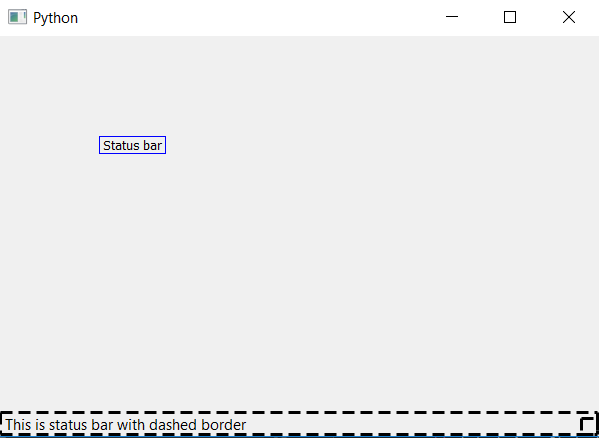PyQt5 – 创建状态栏的虚线边界
在这篇文章中,我们将看到如何在PyQt5应用程序中创建状态栏的虚线边界。一般来说,当我们创建一个有边框的状态栏时,边框是连续的,但我们也可以创建一个虚线的边框,下面是普通边框和虚线边框的区别。


为了做到这一点,我们将使用setStyleSheet()方法。
语法: self.statusBar().setStyleSheet(“border :3px black; border-style : dashed”)
参数: 它使用字符串作为参数。
执行的操作: 它设置虚线边界。
代码。
from PyQt5.QtCore import *
from PyQt5.QtGui import *
from PyQt5.QtWidgets import *
import sys
class Window(QMainWindow):
def __init__(self):
super().__init__()
# set the title
self.setWindowTitle("Python")
# setting the geometry of window
self.setGeometry(60, 60, 600, 400)
# setting status bar message
self.statusBar().showMessage("This is status bar with dashed border")
# setting dashed border to status bar
self.statusBar().setStyleSheet("border :3px black;
border-style : dashed")
# creating a label widget
self.label_1 = QLabel("Status bar", self)
# moving position
self.label_1.move(100, 100)
# setting up the border
self.label_1.setStyleSheet("border :1px solid blue;")
# resizing label
self.label_1.adjustSize()
# show all the widgets
self.show()
# create pyqt5 app
App = QApplication(sys.argv)
# create the instance of our Window
window = Window()
# start the app
sys.exit(App.exec())
输出 :

 极客教程
极客教程